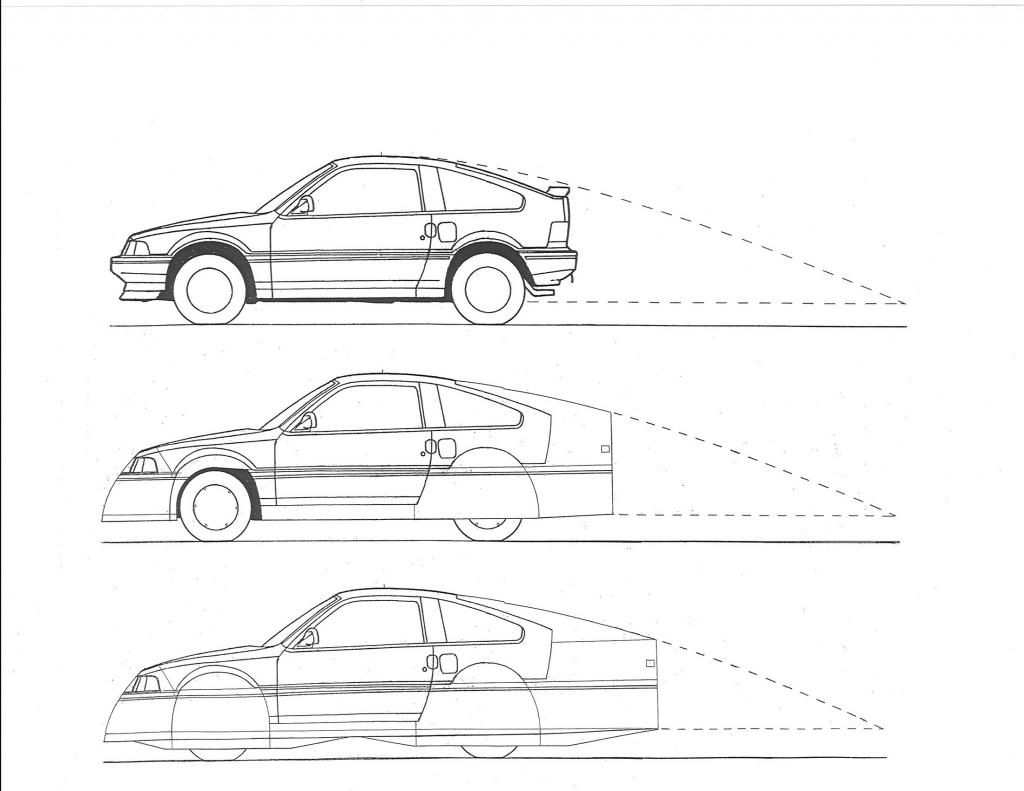I looked back over the CRX project and here are some numbers to consider:
*At 30 mph,Aero hp = 1.21 / Friction and tire losses = 1.76 hp,for 2.97 hp.
*At 50 mph,Aero hp = 5.61 / Friction and tire losses = 2.94 hp,for 8.55 hp.
*At 70 mph,Aero hp = 15.3 / Friction and tire losses = 4.12 hp,for 19.50 hp.
--------------------------------------------------------------------------
*At 50 mph,the road load was 14.25% of rated power.
*The engine would be developing 9.28 bhp (15.46% of rated power).
*With a 3-barrel carburetor,the reduced load might have allowed WOT idle circuit throttle,plus WOT secondary throttle,and zero throttle at the 3rd barrel.
*This would allow a very good volumetric efficiency as far as pumping losses.
*The streamlining allowed the CRX to achieve an mpg @ 70 mph,which she used to see at 55 mph.(52 mpg).
*Top speed went from 93 mph,to 100 mph.
*It wasn't uncommon to see 60+ mpg at the old double-nickel speed limit (the speed the car was designed for).(highest ever single tank= 82 mpg).
------------------------------------------------------------------------
*For an EFI engine,with a single throttle,a reduced load would mean a throttle position trending towards closure,extremely high drag across the throttle plate,high pumping losses,and volumetric efficiency all shot to hell.
--------------------------------------------------------------------------
*Taller gearing would 'load' the engine,force a more open throttle,improve the volumetric efficiency,and tend to move the engine back to it's optimized island of BSFC.
*I don't know the horsepower for the CIVIC but I suspect that it's much higher than the CRX and my opinion is that maybe even a smaller throttle body might help the situation.I'm not an engine guy.

The upper two images show the stock car and mods as far as I got.The drag coefficient is estimated from top speed,mpg, and coastdowns @ Cd 0.235.
